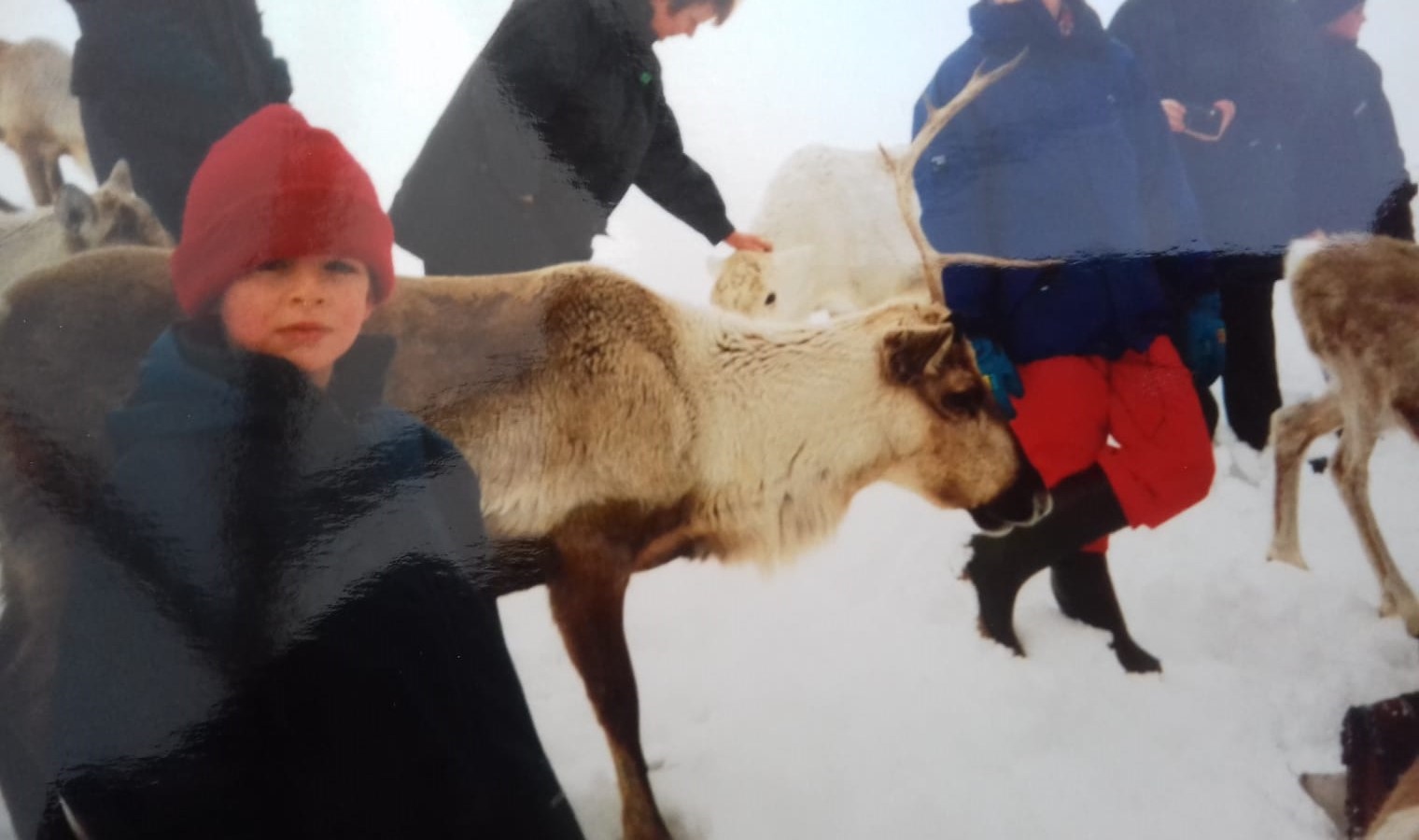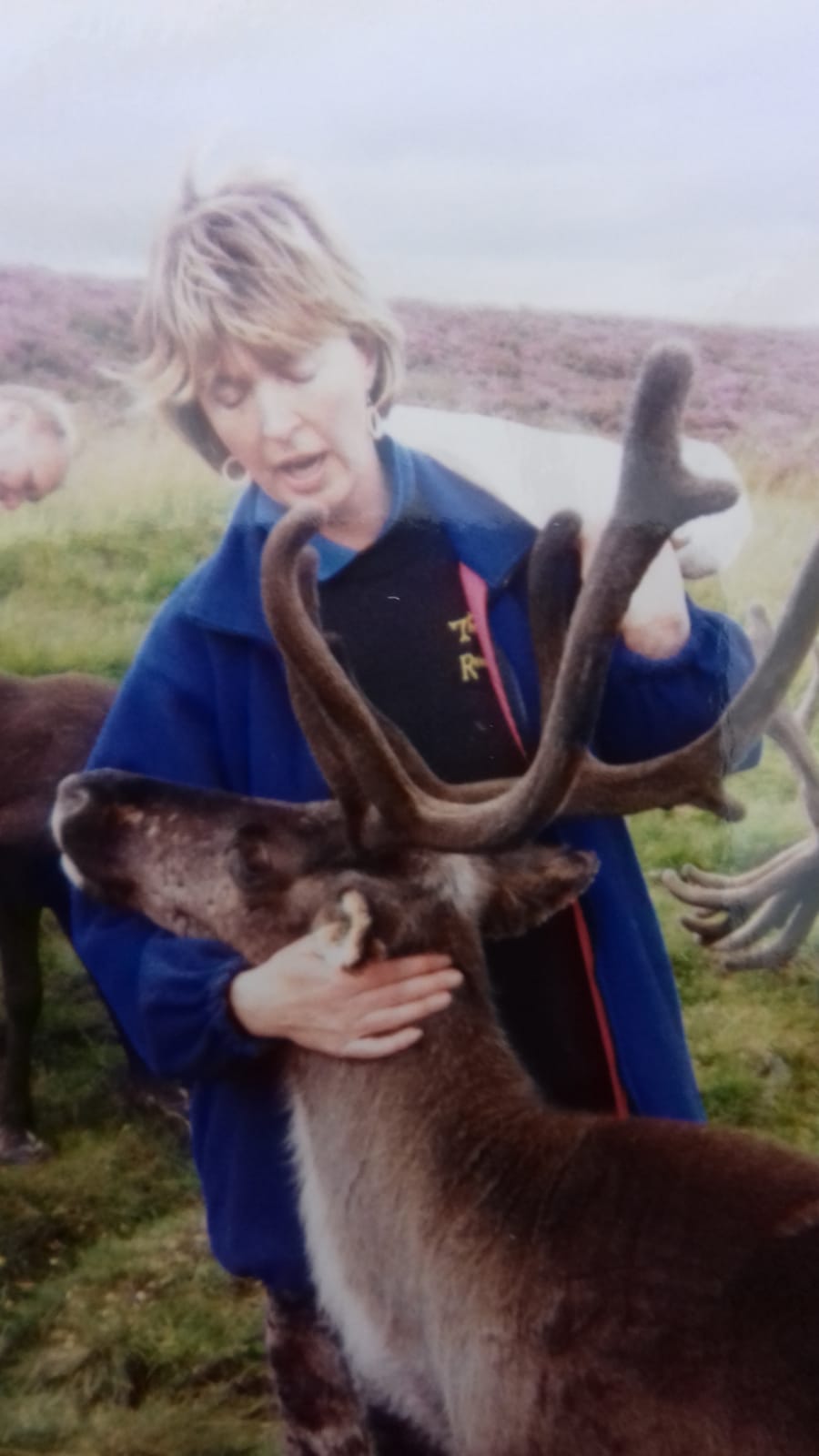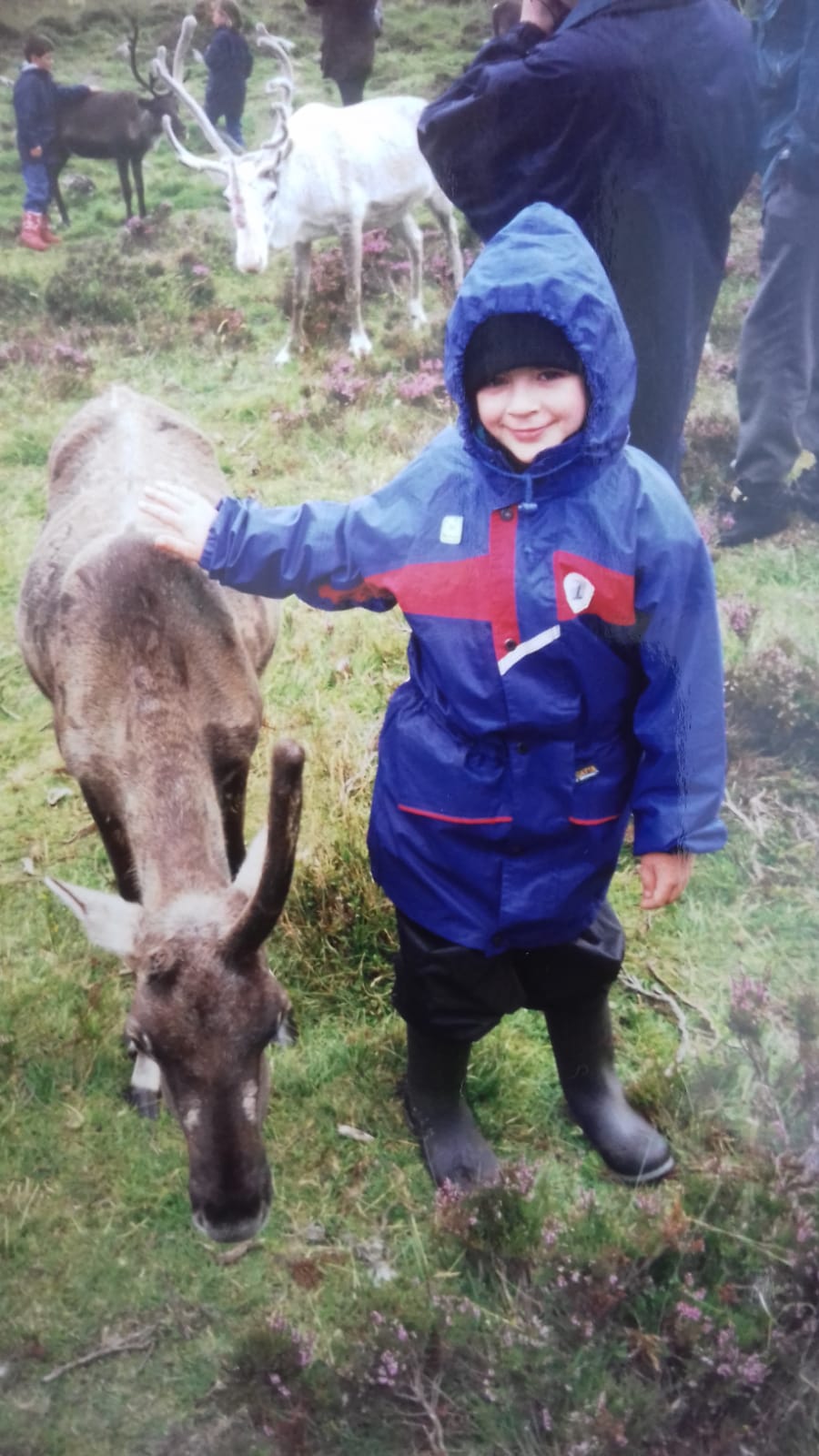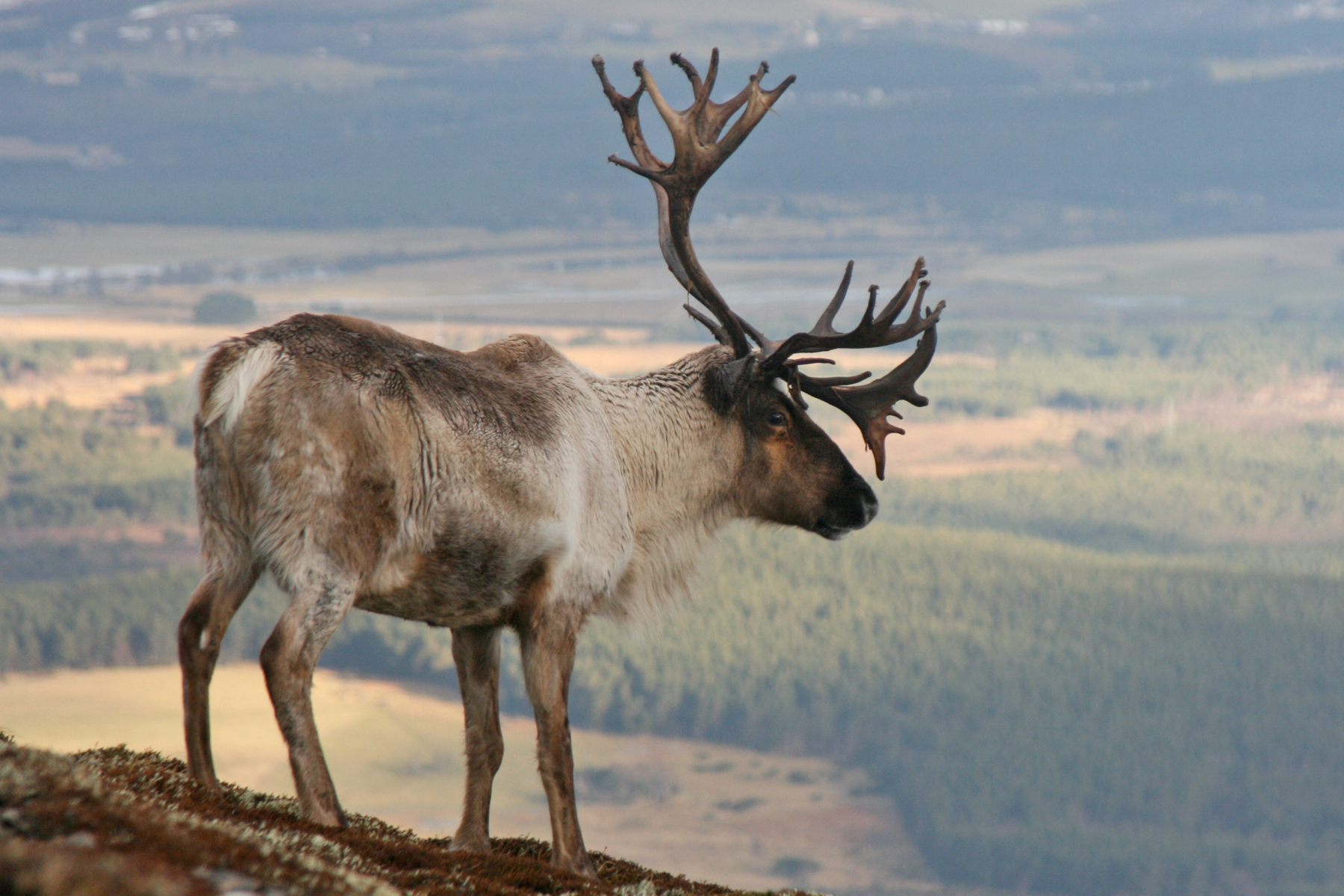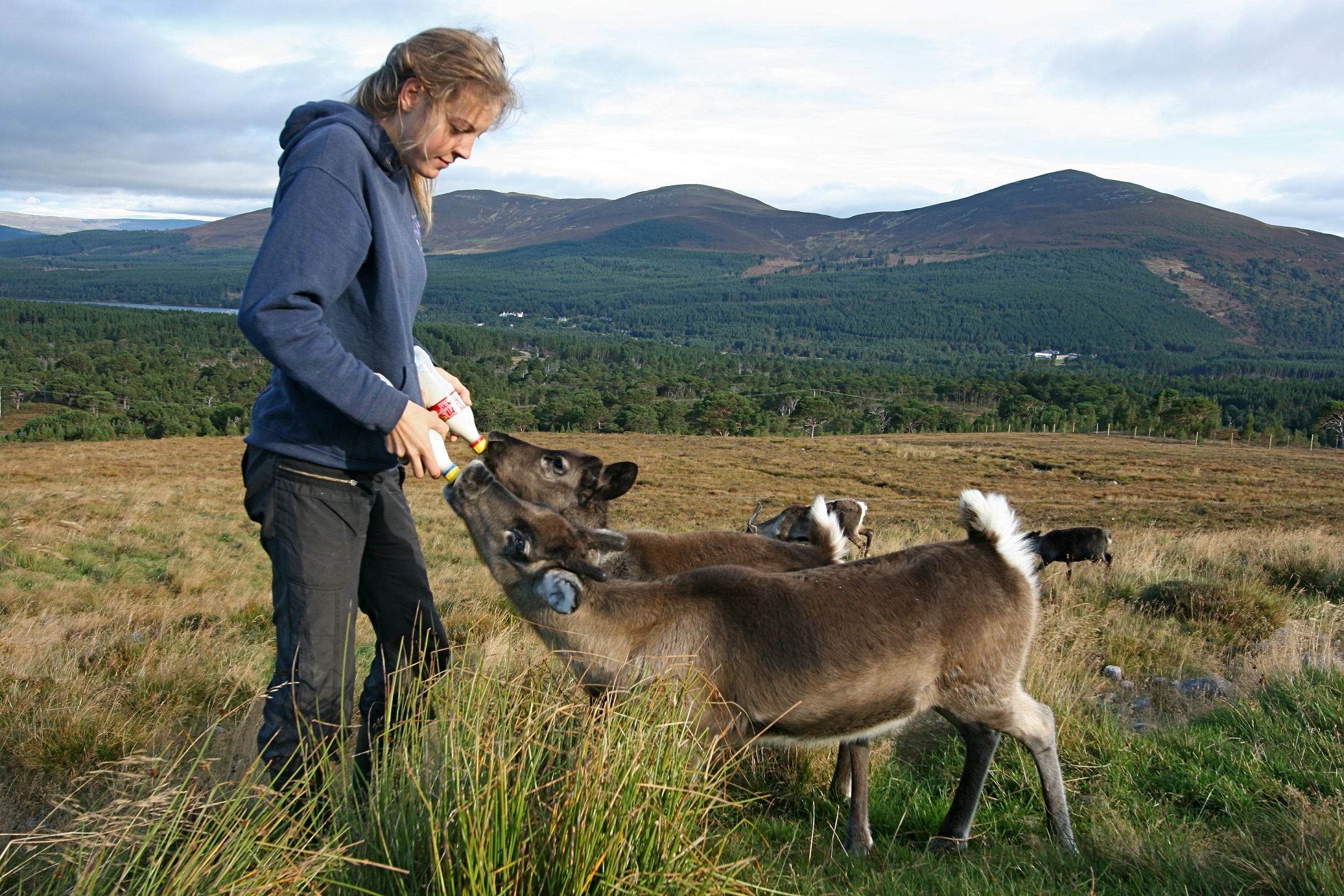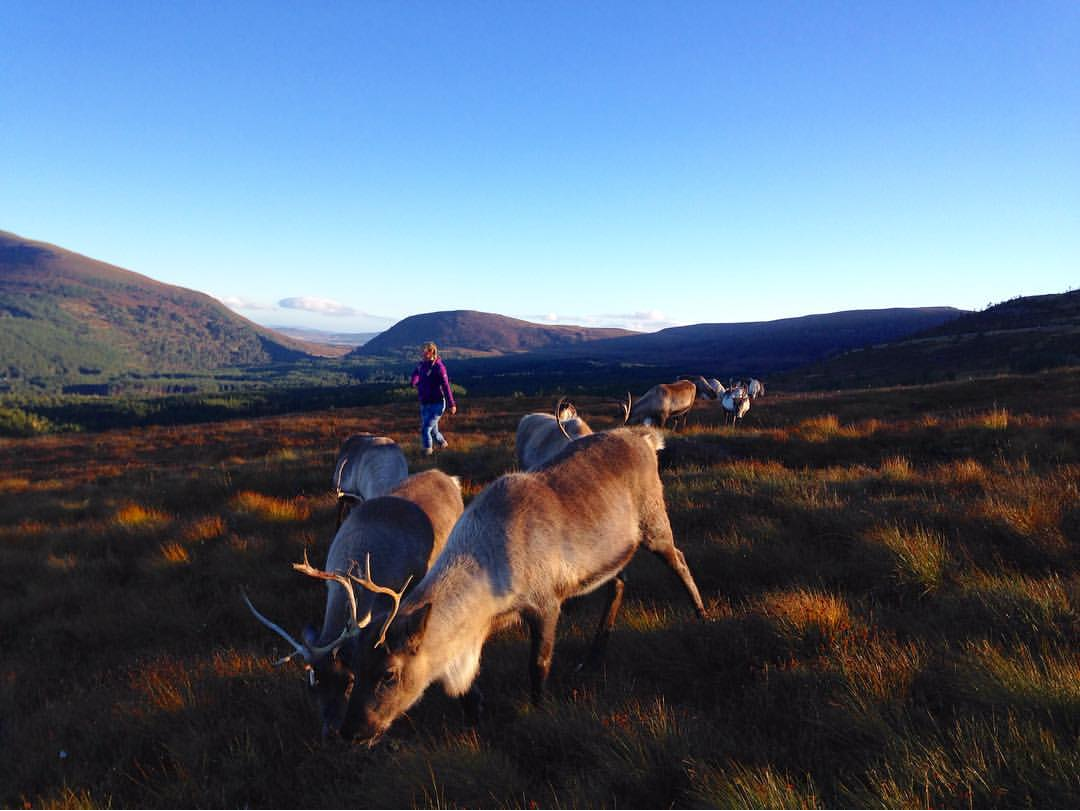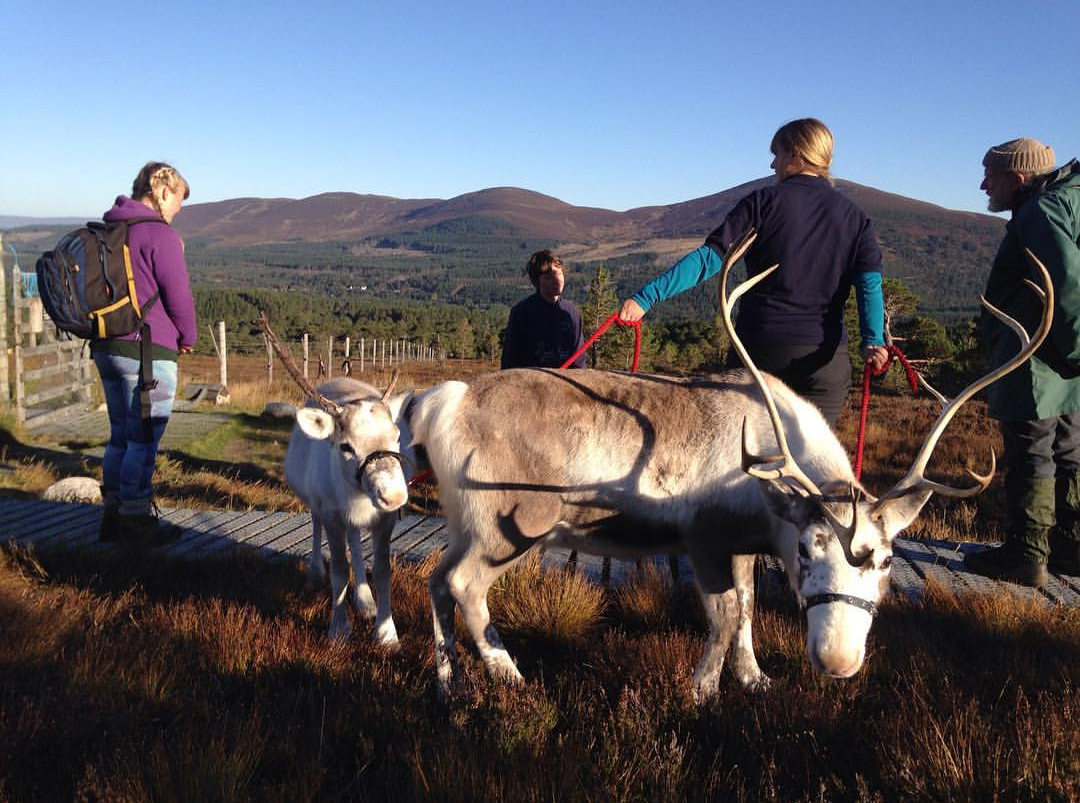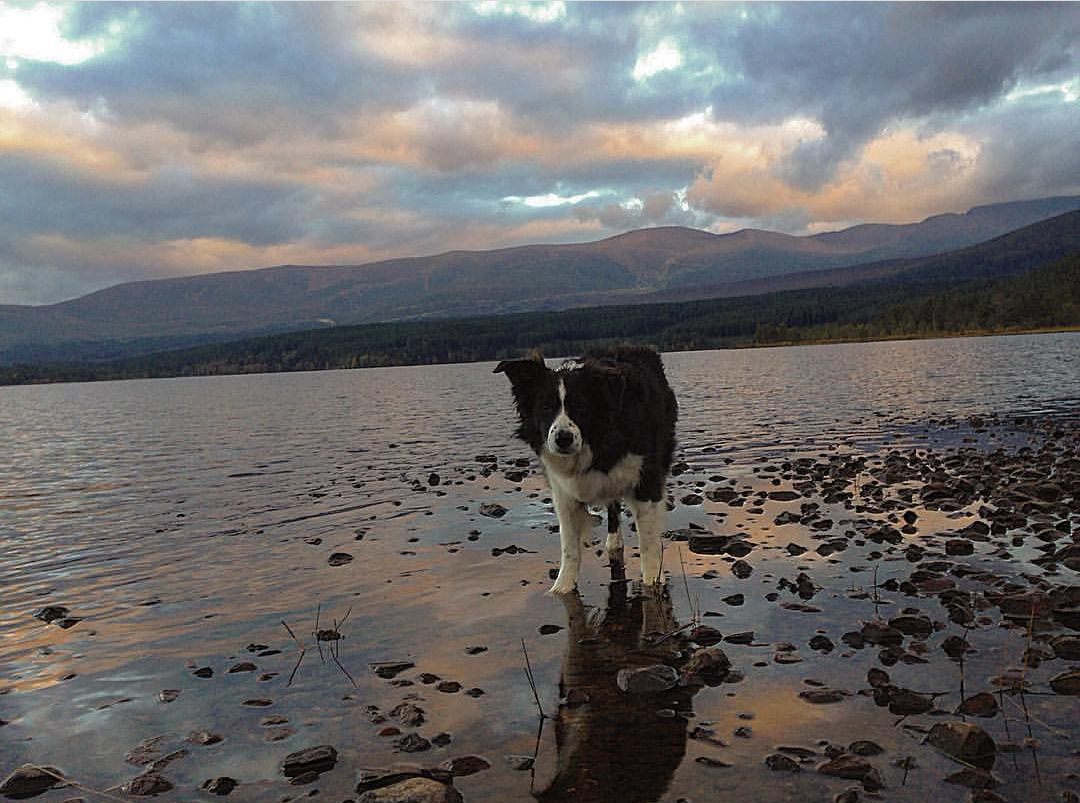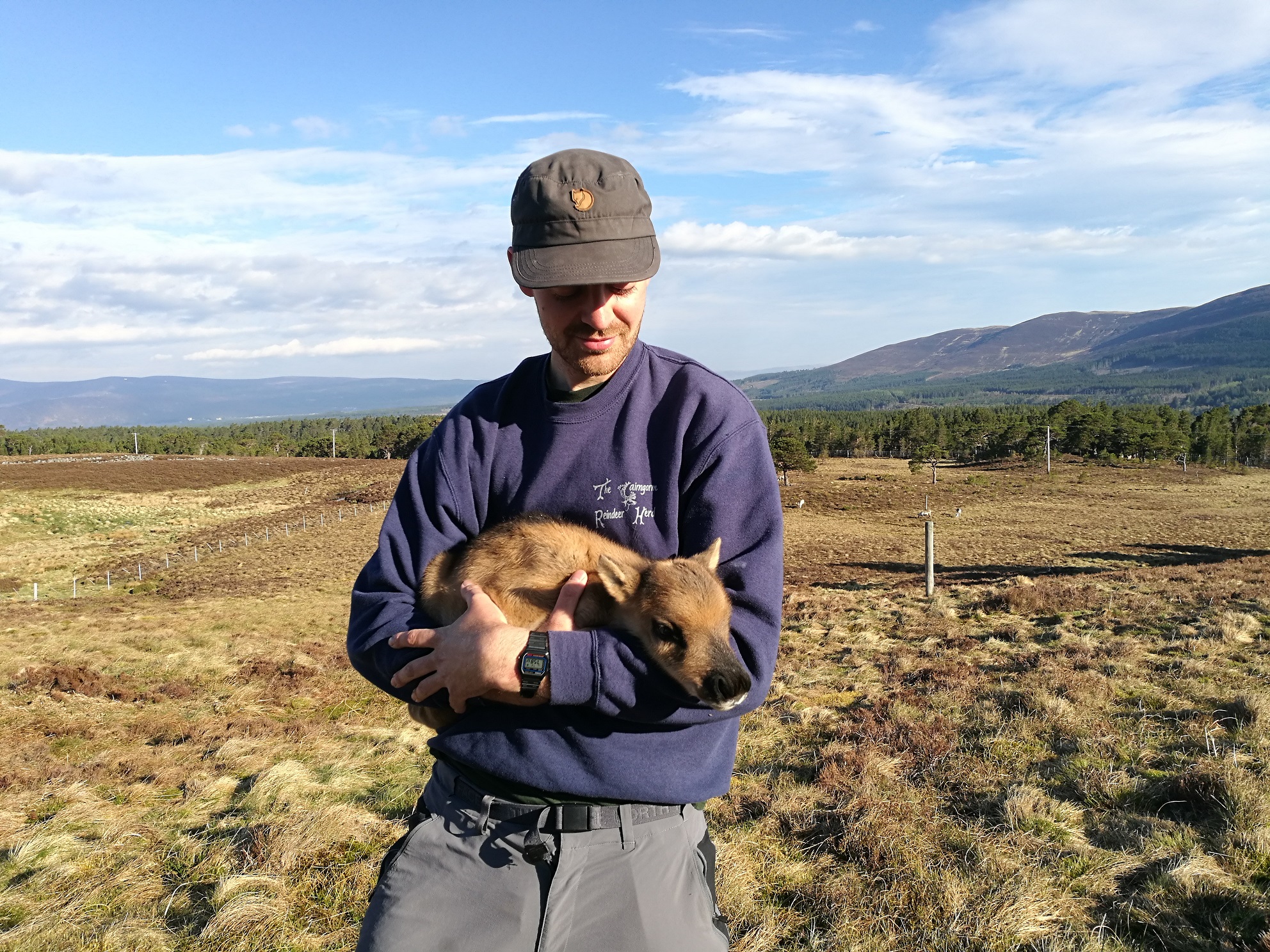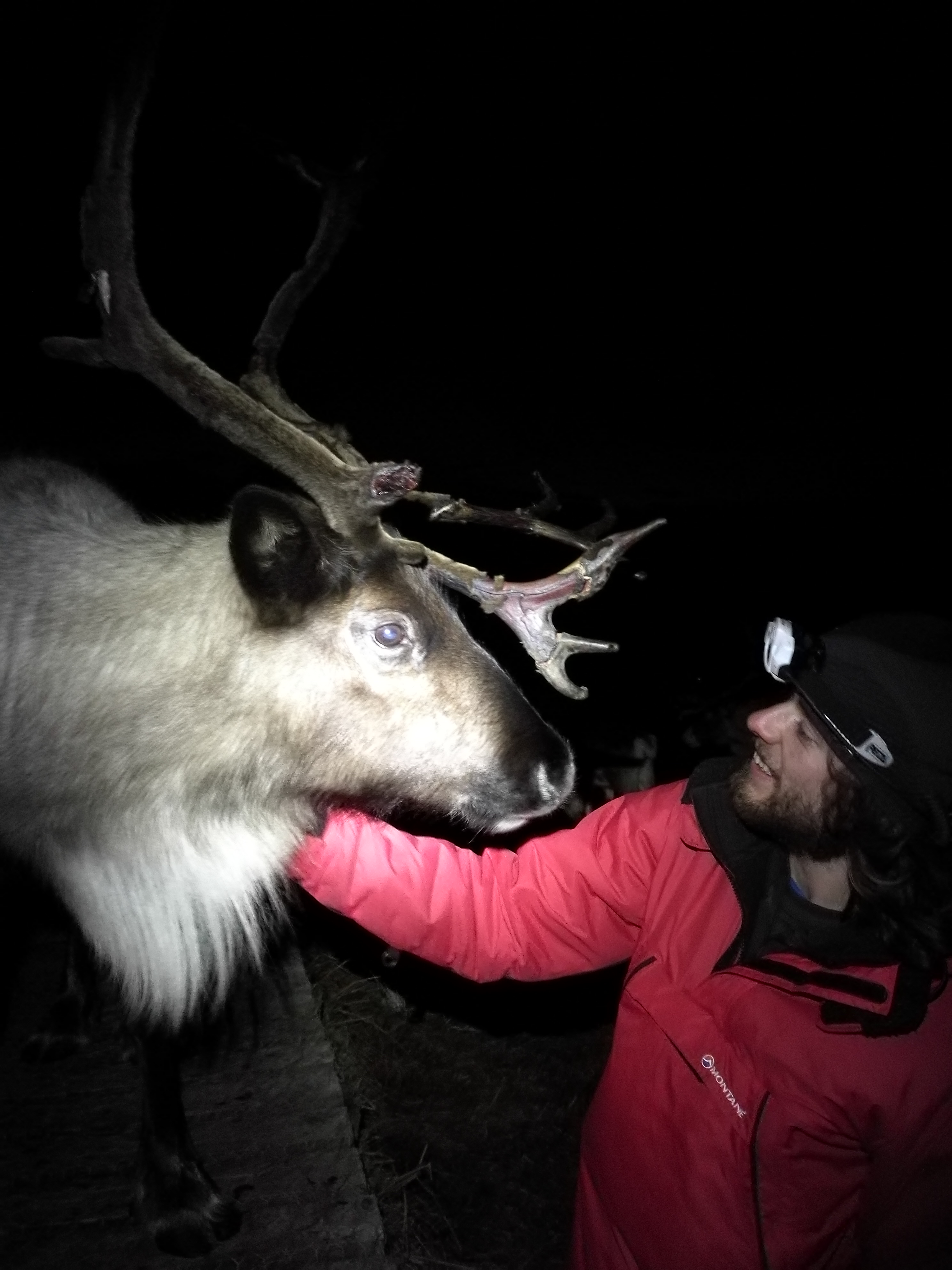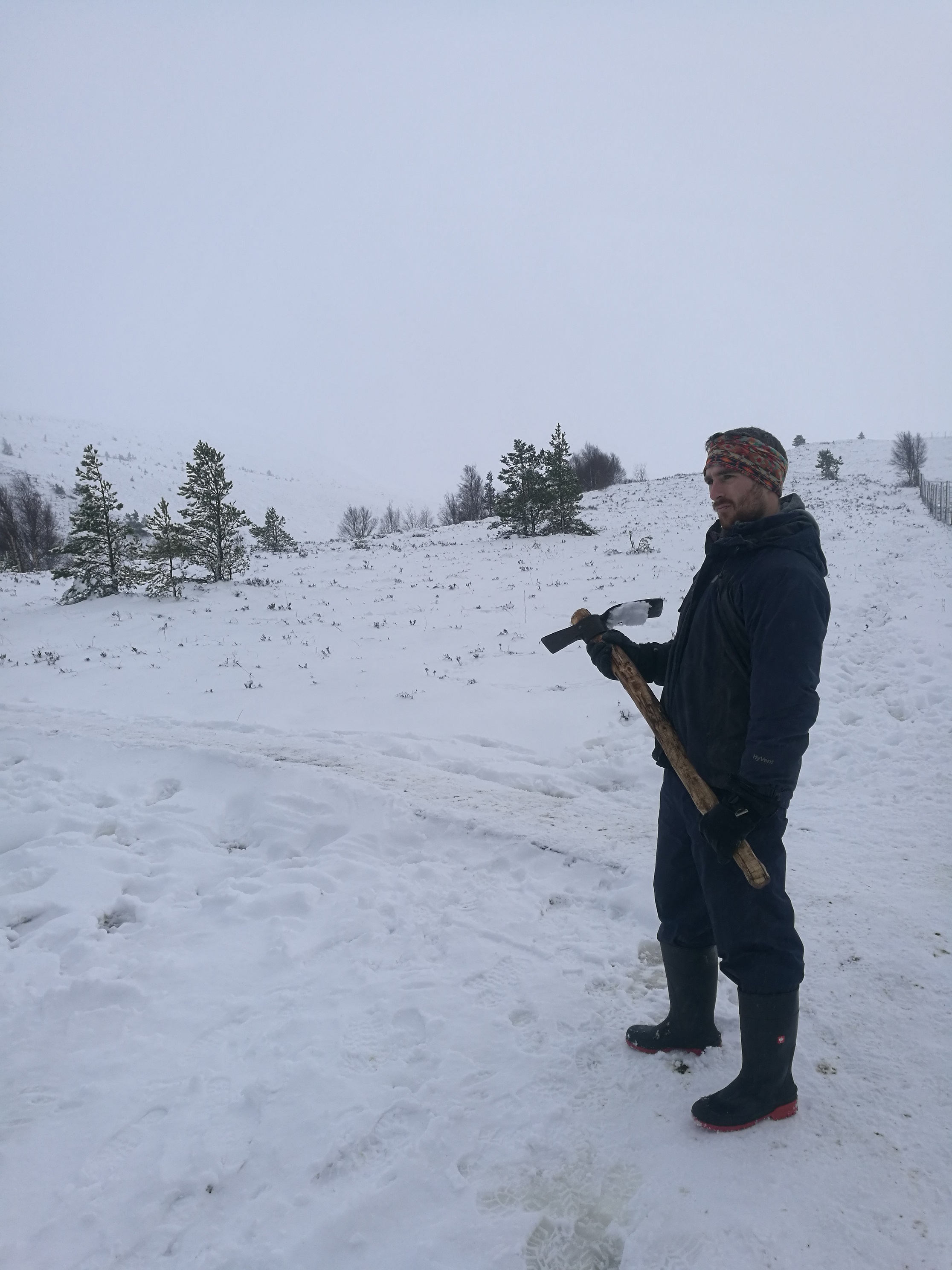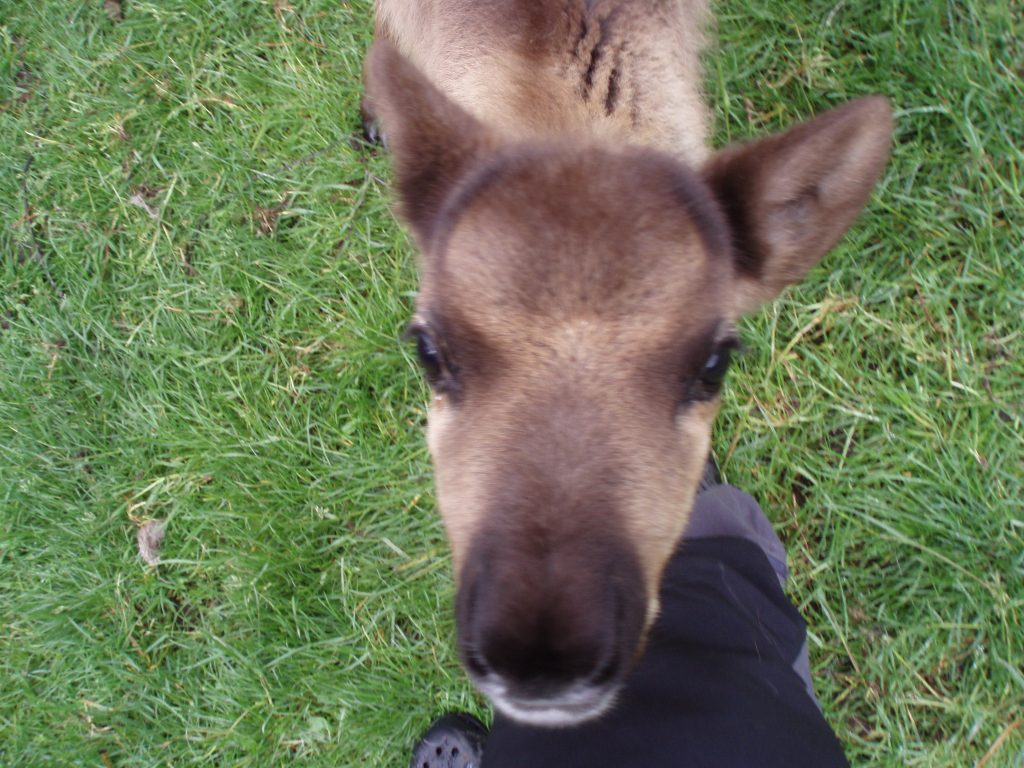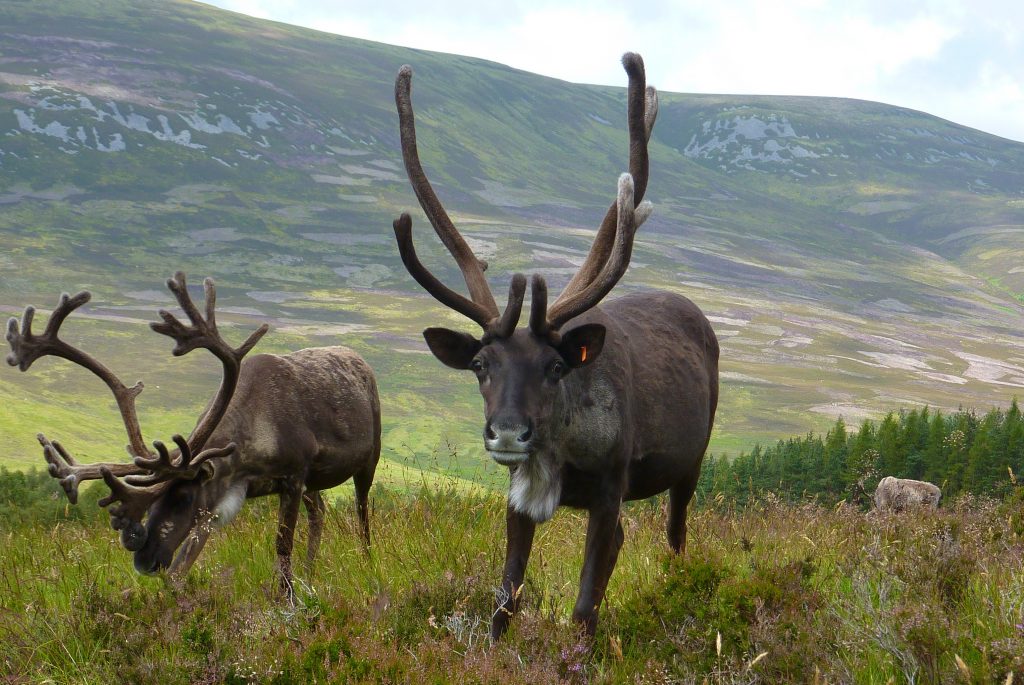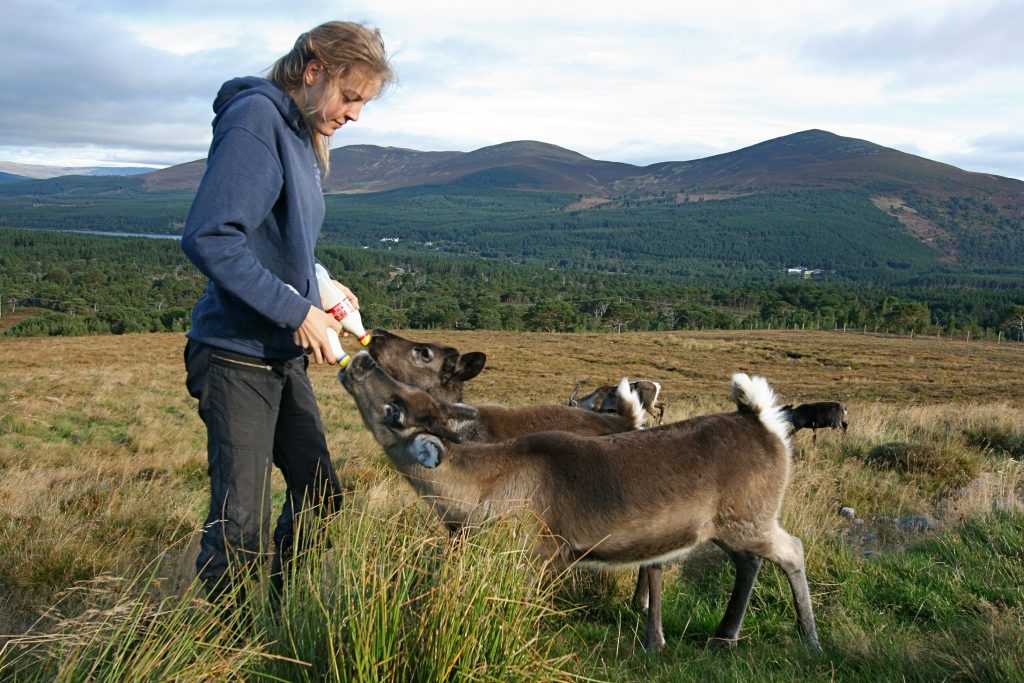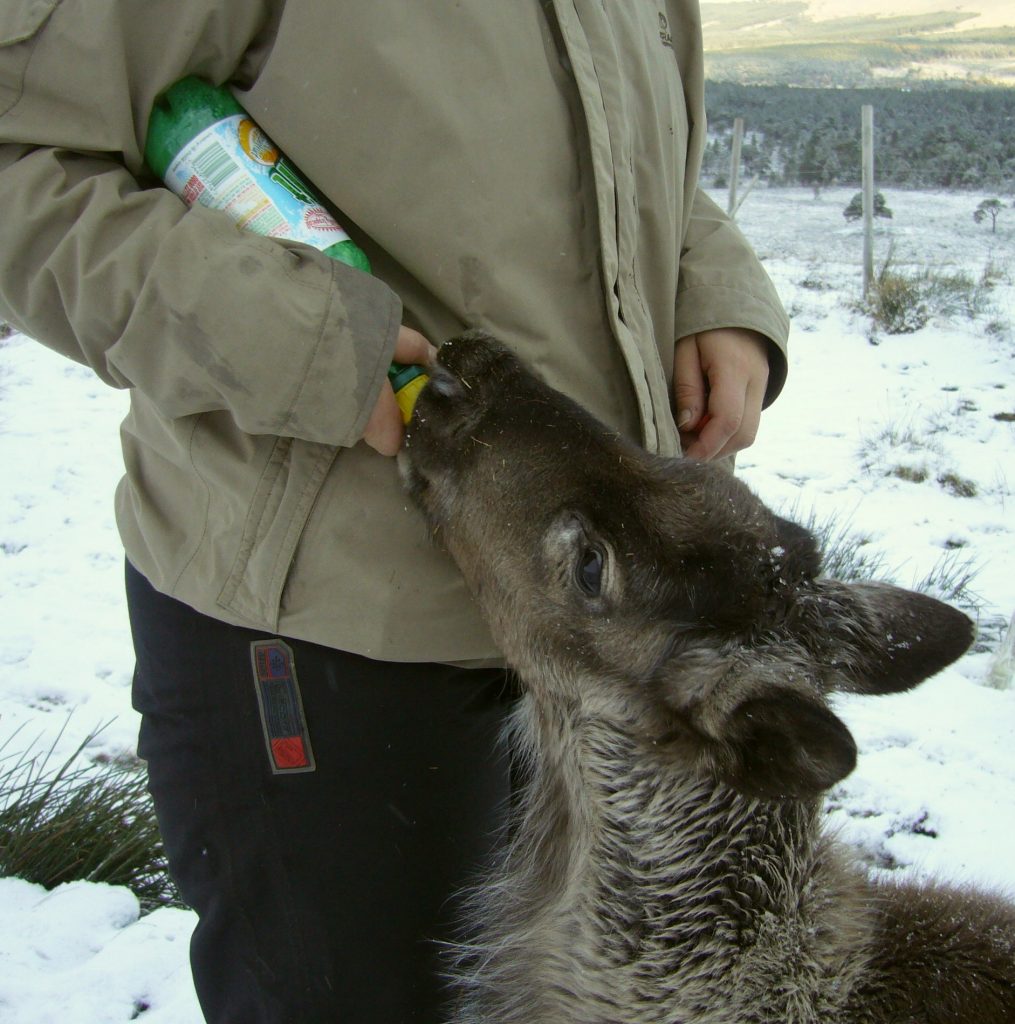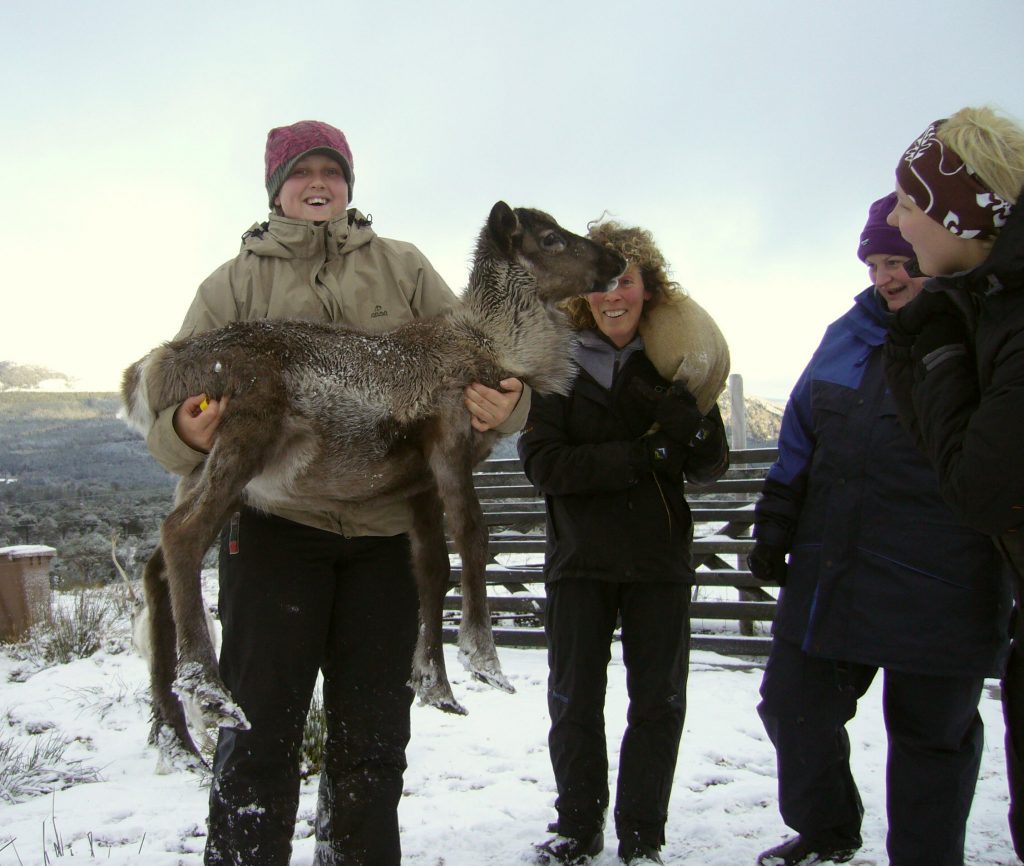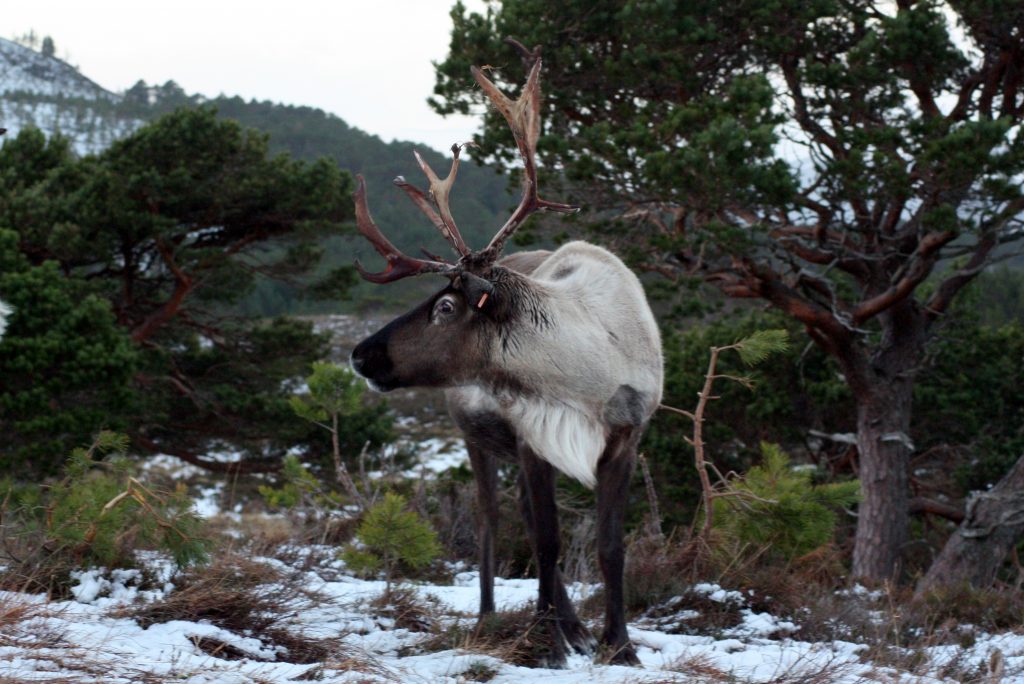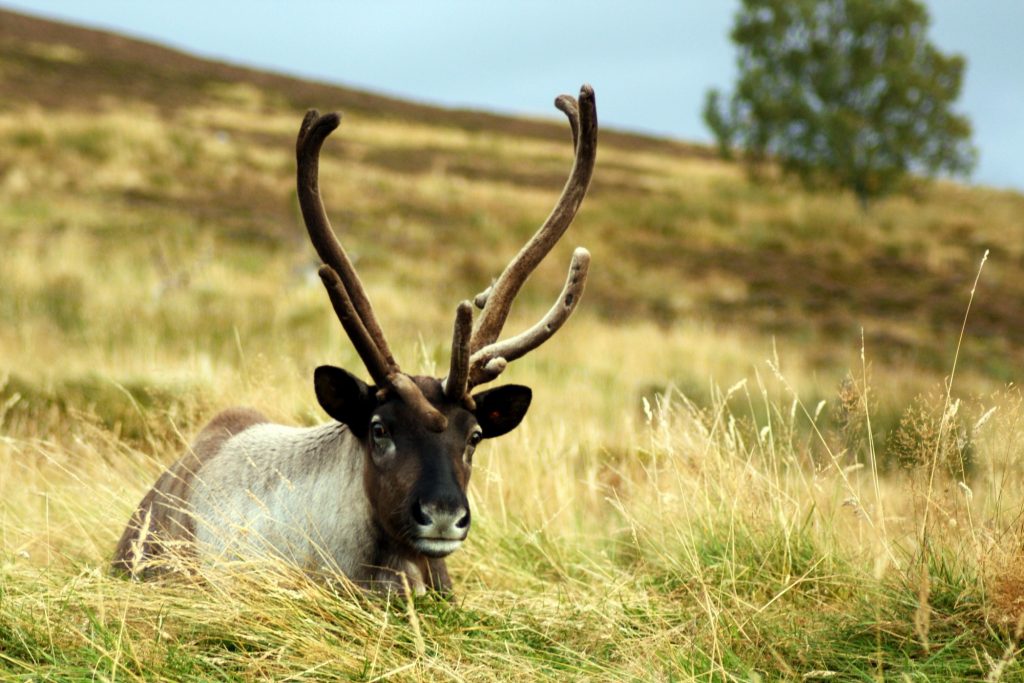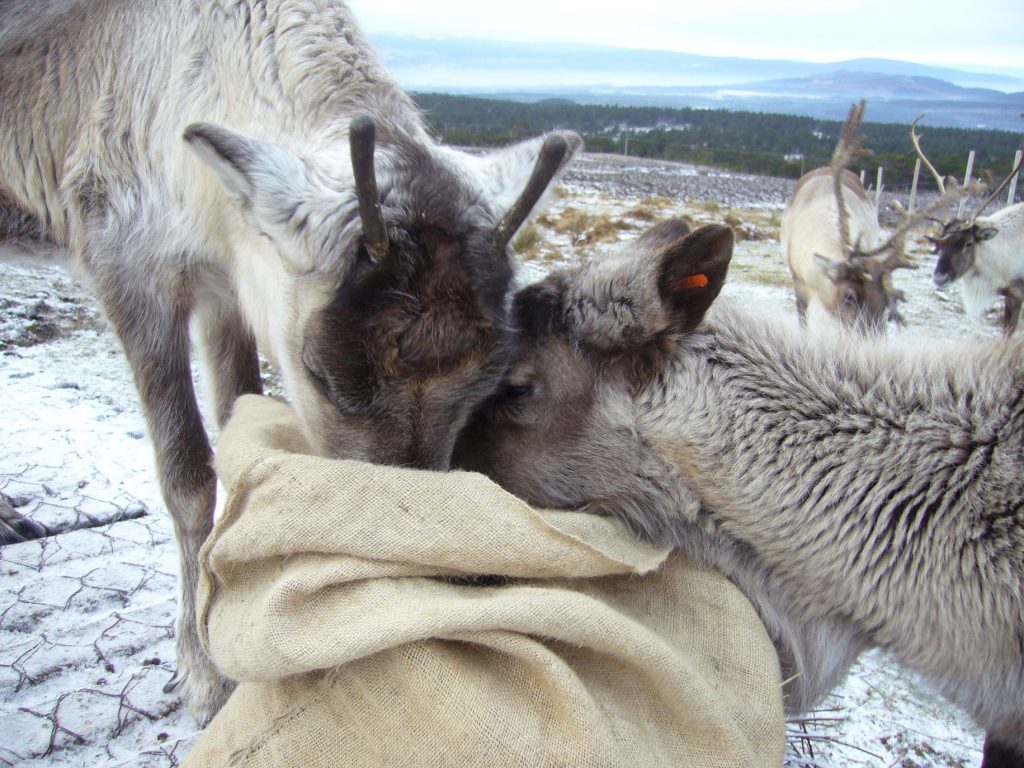Reindeer have a hugely thick coat as they are designed to survive Arctic and sub-Arctic winters, and they are one of the only mammals to have hair covering every part of their body, even including their noses. So they look incredibly cuddly and visitors are usually desperate to stroke them. If you’ve been on one of our Hill Trips pre March 2020, you might remember being allowed to stroke them too, but now we have stopped this direct contact between visitor and reindeer. But why?
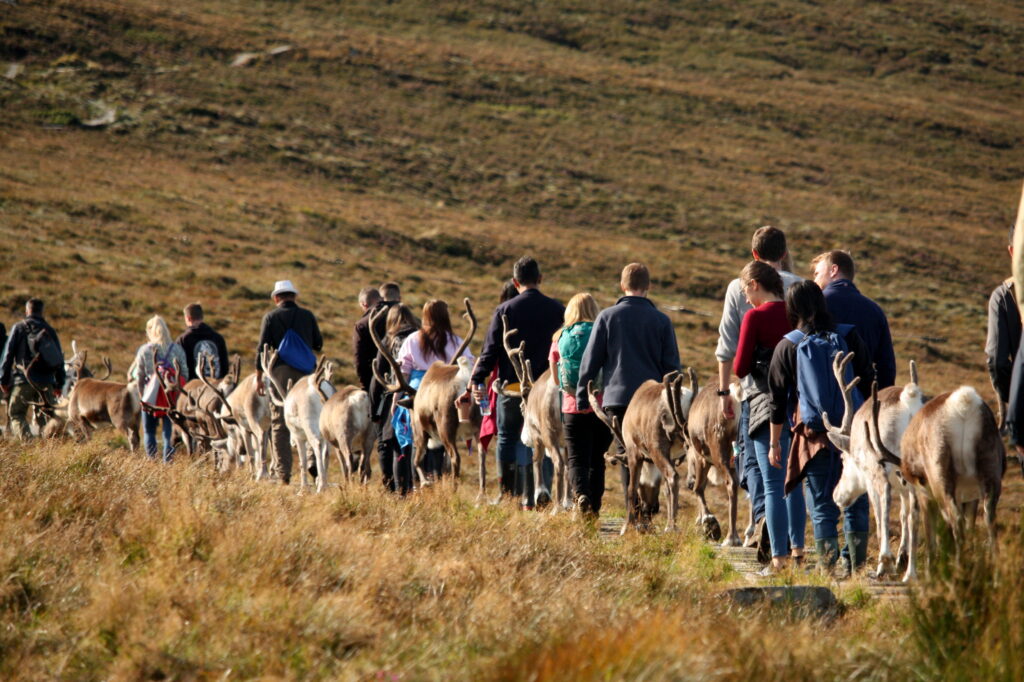
First, some background information about reindeer’s behaviour to each other without influence of human presence. Reindeer are not a ‘tactile’ animal, despite their strong herding instinct. Because of their thick coat they have no need to huddle together for warmth at any point, so the only time you see direct contact between them – such as resting their heads on each other – is affection between mother and calf. Calves stay with their mums for a year only (usually), but after this that close bond is broken and direct contact stops.
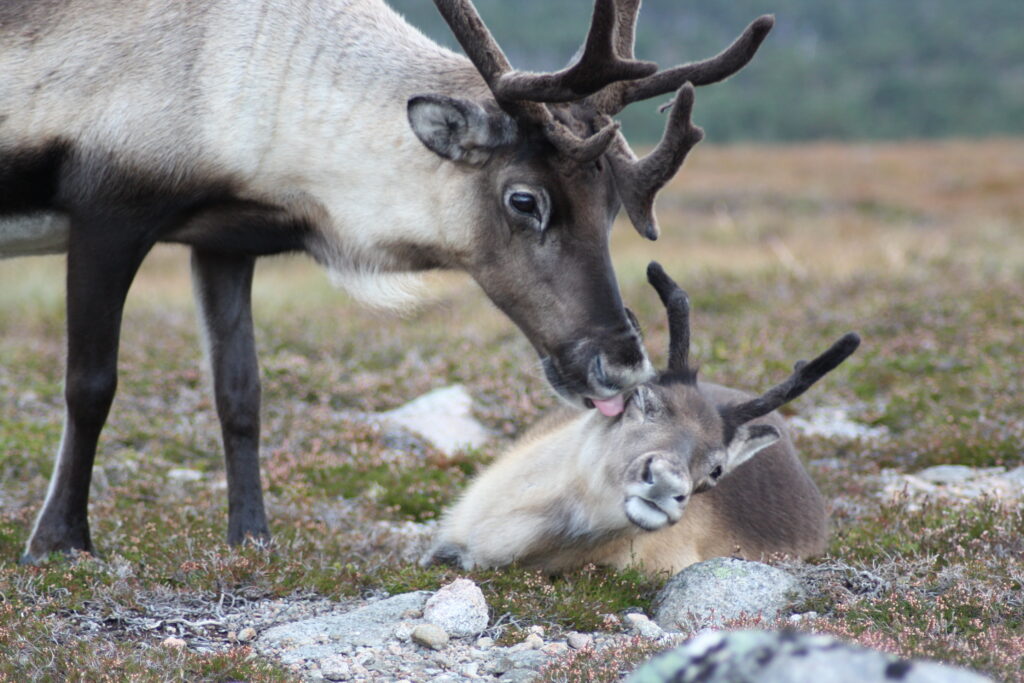
Living in an incredibly harsh environment also means it’s critical to establish a hierarchy, as reindeer need to be able to compete for food when winter is at it’s hardest – hence the presence of antlers on both males and females. Males are bigger in body size so they lose their antlers first, leaving the smaller females at the top of the pecking order through the winter months when food is at it’s scarcest, and when they are likely to be pregnant too. This means that the herds constantly establish dominance between each other, pushing each other around and chasing less dominant reindeer away from good grazing spots.
Come on a Hill Trip and look around you, and you’re unlikely to see any reindeer nuzzling each other, but it’s almost guaranteed you’ll see reindeer pushing each other around. So a reindeer touching another is generally an agressive action, with antlers – or front feet – used as weapons. The way I like to phrase it to visitors is that we are entering the reindeer’s natural territory, so we therefore play by their rules – touch is a negative thing so we aren’t going to do so.
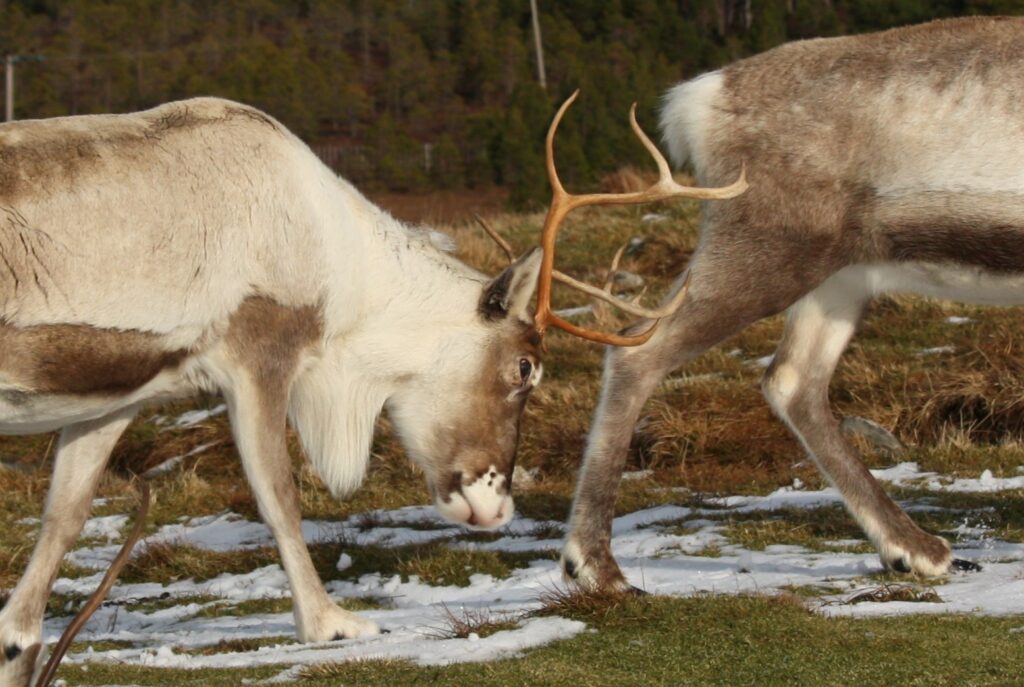
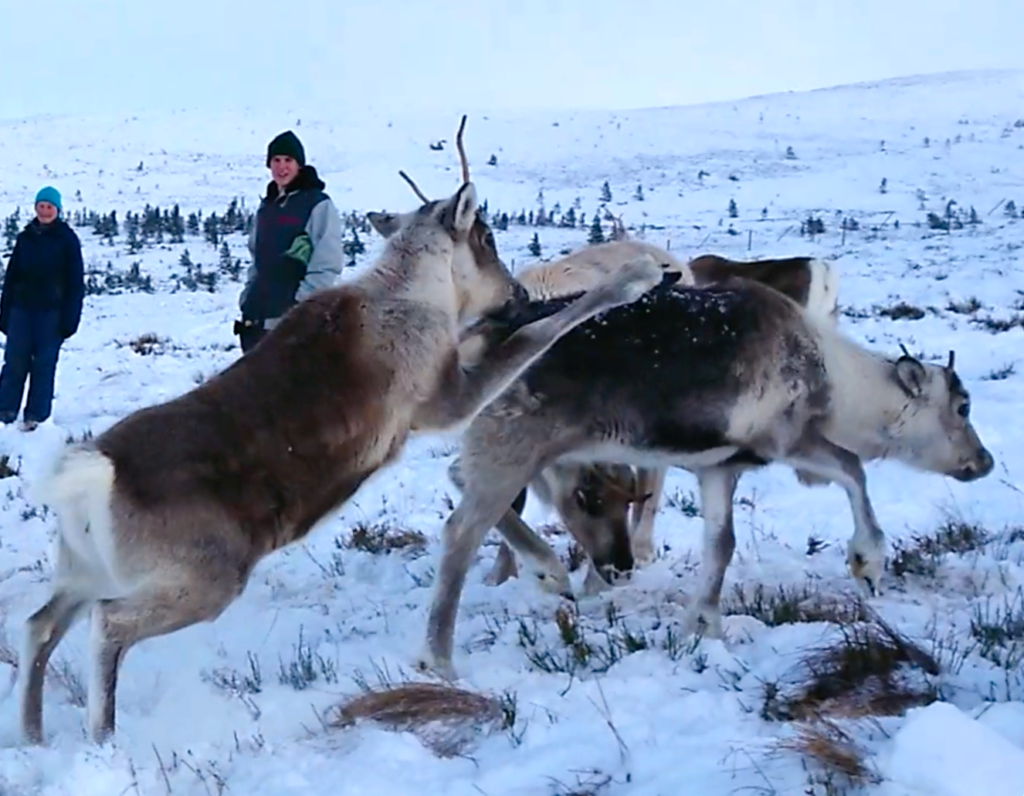
However, pre-covid, we didn’t have a hard-and-fast rule about not touching the reindeer. It was never something we encouraged, but not something we outright banned. As our reindeer are incredibly tame, many did actually tolerate a gentle stroke or pat, and the ones that didn’t had space to move away from visitors. However, some reindeer were well known for standing there looking beautiful and luring visitors in close, only to try and clobber them. This led to us having to have eyes in the back of our heads as guides, and I found myself frequently – often mid-sentence – having to suddenly holler across the hillside: ‘just stand back from that one!’ / ‘don’t try and touch him!’ / ‘oops, sorry about that… are you ok?’. I found this happening more and more too, as our visitor number increased considerably over recent years. Coupled with that, was people’s inability to read reindeer body language – which is perfectly understandable for those not used to being around animals. Generally a grumpy reindeer will warn visitors to keep their distance before going a step further and insisting that they do, but this is often lost in translation from reindeer to humans. Clear as day to those of us who are well-versed in reindeer, but not to all.
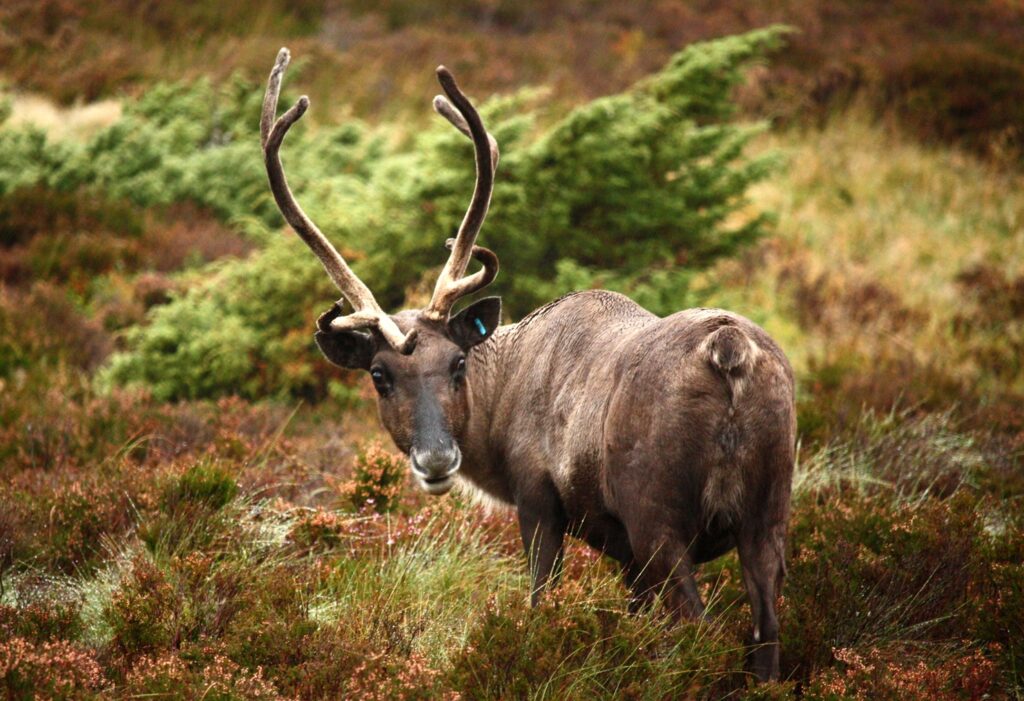
But covid brought about a change that, in hindsight, needed to happen anyway. For months no-one was allowed to touch anything – reindeer included – and we realised just how much more relaxed the herd were with the new ‘hands-off’ rule. The ‘background’ reindeer of the herd – shyer members who would normally keep themselves a good distance away – started wandering in amongst everyone, sometimes within arms reach, but safe in the knowledge that they wouldn’t be patted unexpectedly. Everyone was more relaxed and this included us as guides – since our rules changed I can probably count on one hand the number of times I’ve had to rescue an unsuspecting visitor from a reindeer who got out of bed on the wrong side that morning. I’m not going to lie – it does still happen sometimes as animals are always unpredictable, but with far less frequency.
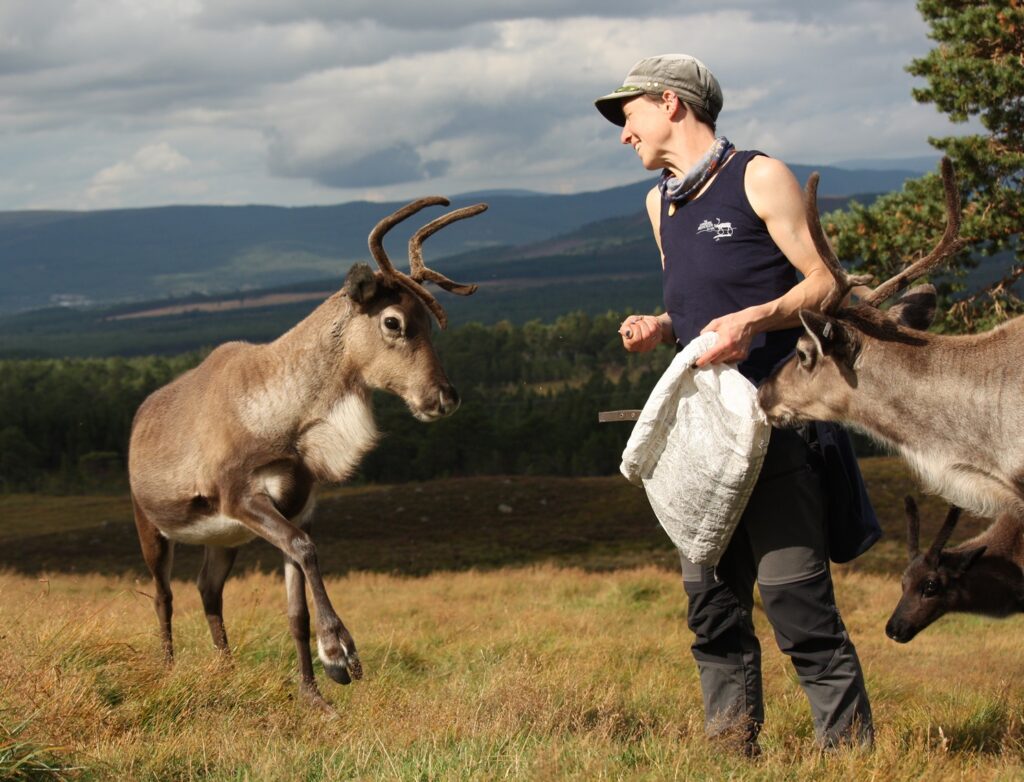
So ‘hands-off’ was here to stay. Once covid guidelines relaxed enough we started allowing visitors to hand-feed the reindeer once again, albeit in a more controlled fashion and allowing one turn per person only. This generally keeps manners better amongst the greediest members of the herd, meaning they only barge around for a short time period before settling down, but it does allow one small bit of contact that visitors crave.
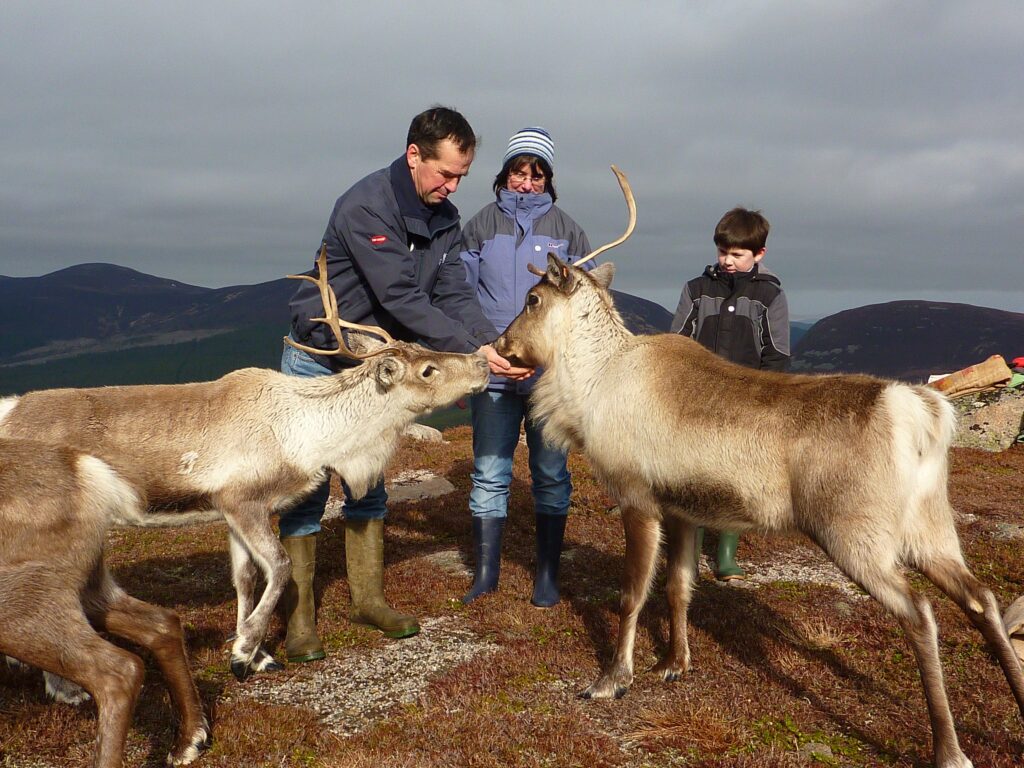
As far as we know, folks who have visited both before and after seem happy with the changes, and almost everyone I’ve spoken to agrees that the reindeer are more relaxed and that their welfare is utmost. And of course, reindeer don’t read the rulebooks so they sometimes choose to touch visitors themselves, which is fine – it’s on their terms. A visitor finding a furry nose suddenly sniffing them, whiskers tickling their skin, is a happy visitor indeed.
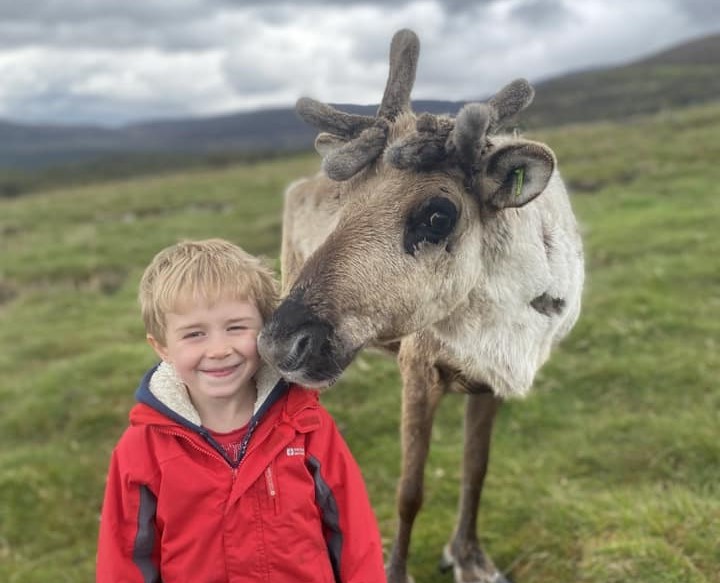
It’s perhaps important to add that whilst we don’t – and have never – patted or stroked reindeer unnecessarily, we do have to handle them ourselves, but we do so without ‘fussing’ them. We we need to be able to handle them for veterinary care, worming and vaccinations etc., and this needs to be as unstressful for the animals as possible so we do put work into each individual to make sure they are comfortable being handled in this way. We also need to be able to move reindeer from place to place, so every single animal in the herd is trained to walk on a halter at around 5-6 months old, and a lot of effort goes into getting them easy to catch and halter. If we can’t catch a reindeer we run the risk of not being able to catch them at a critical point, i.e. if ill. Nowadays pretty much all of our reindeer aged 7 or less are catchable with ease as we have put more work into this aspect of training in latter years; but there are admittedly still some wily old reindeer who have to be brought into a shed to get hold of them! Looking at you, Sika…
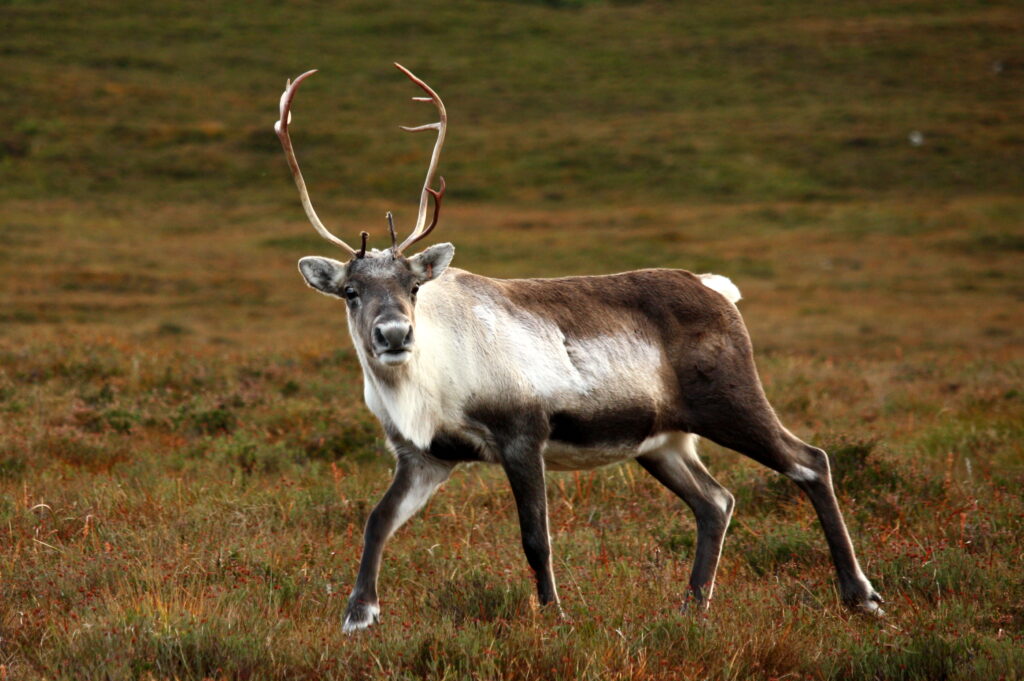
More work goes into our male reindeer overall, as they help to keep our business afloat by taking part in Christmas parades and events, earning income that helps to pay for their grazing leases etc. But again this is all done in a sensitive way and we work as a partnership with them, and touch is – as ever – kept to the minimum; the reindeer know their job and we know ours, and any reindeer that isn’t comfortable with the situation just stays at home.
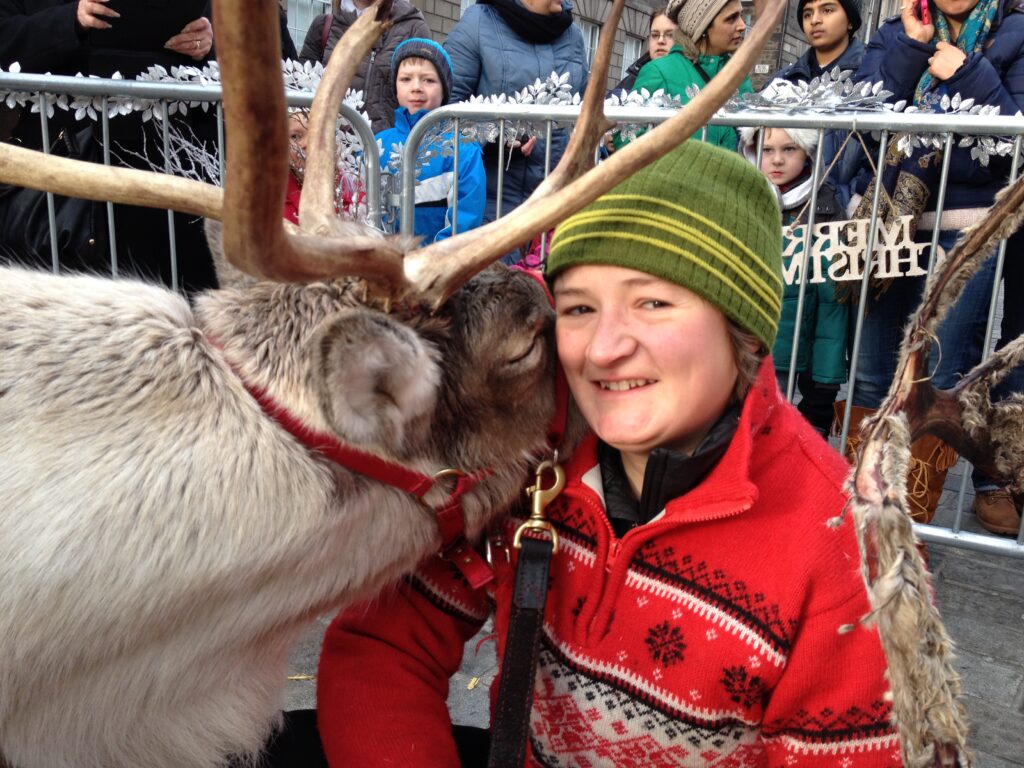
So hopefully that gives an overview of why we have stuck to the change we made to Hill Trips in 2020. Initially I was worried we’d have a huge negative backlash from visitors, but there never has been really, and whilst we do know how tempting it is to stroke them, we hugely appreciate everyone’s efforts in not doing so. As we say, if struggling to resist the urge, stick your hands in your pockets!
Hen

